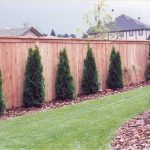Benefits of Installing a Wooden Boundary Fence in Winter
As the cold weather hits, you want your home to be as prepared as possible both inside and outside. Many people think that the best time to get their gardens ready for winter is during the summer months when the weather is warm and dry. They trim their bushes, install a new wooden fence, and plant new flowers during July and August. However, this might not actually be the best way to go about your winter preparation.
Benefits to Installing a Wooden Boundary Fence in Winter
It might seem counterintuitive, but there are several benefits to installing a wooden boundary fence in winter. Here are some of the many reasons to install your new fence in the colder months.
It’s the Off-Season

Get your wooden boundary fence installed in time for the cold weather.
Wintertime is the off-season for most outdoor activities. Getting all of your garden and surrounding fencing in order before the warm weather hits will ensure you are fully prepared for summer. Also, buying in the off-season might mean top-quality fence installers are more available. This way, you can enjoy your summer to the max without worrying about your garden tasks.
Summer Sun Isn’t Good for Wood
The hot summer weather is not the best for wooden fencing. It can sometimes dry out the wood, or in high humidity climates, it may lead to excess condensation and absorption of moisture. This can lead to the growth of mold, which might stain or decay the wood.
The Wood Can Acclimate and Settle
Installing a wooden boundary fence in winter enables the material to acclimate to colder temperatures. This ensures that the wood has already settled and is prepared for the winter climate when the next winter rolls around.
For more information on the benefits of installing a wooden boundary fence in winter and to get a residential service price estimate, contact Boundary Fence today.







